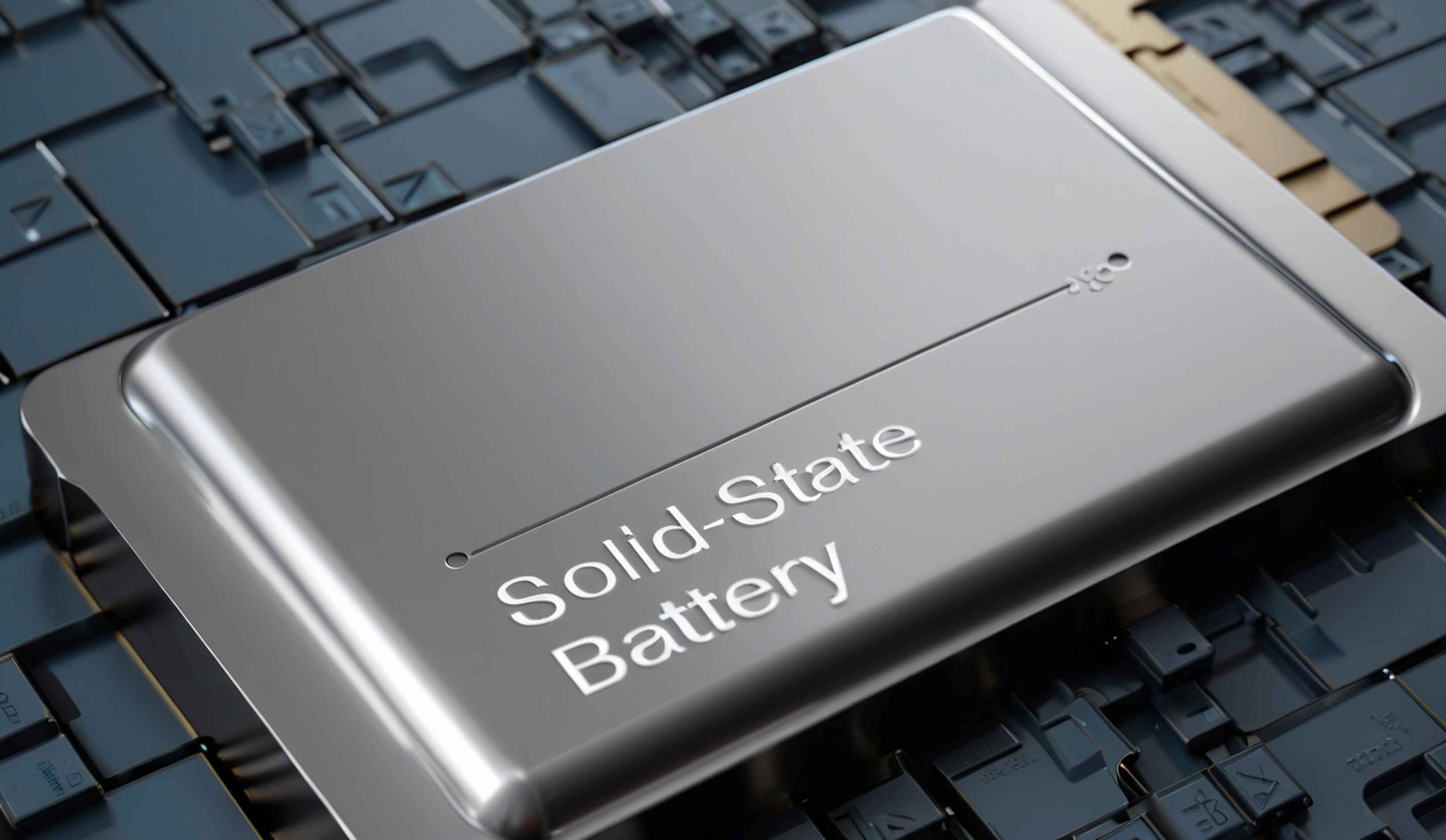Abstract
Solid-state batteries represent a transformative advancement in energy storage technology, offering enhanced safety, higher energy density, and superior mechanical stability compared to conventional lithium-ion batteries. However, the development of high-performance anode materials compatible with solid-state electrolytes remains a critical challenge. This study introduces a phosphorus/carbon/lithium (P/C/Li) ternary composite anode synthesized via high-energy ball milling combined with pre-lithiation. The composite leverages the high theoretical specific capacity of phosphorus (2,600 mA·h/g), the chemical stability of graphite, and the mechanical robustness of lithium metal. Optimized at a phosphorus-to-carbon mass ratio of 2:8 and a pre-lithiation level of 10%, the P/C28-10% anode demonstrates exceptional electrochemical performance in solid-state batteries. After 100 charge-discharge cycles at 1.0 C and 25°C, the anode retains 107.6 mA·h/g with an 80.5% capacity retention rate. Symmetric cells incorporating this anode exhibit stable operation for over 200 hours, underscoring its potential for high-energy-density and dendrite-resistant solid-state battery applications.

Introduction
The transition to renewable energy systems and electric vehicles demands energy storage solutions with higher energy density, faster charging capabilities, and improved safety. Solid-state batteries, which replace flammable liquid electrolytes with solid alternatives, are poised to address these needs. However, anode materials for solid-state batteries must overcome challenges such as interfacial incompatibility, volume expansion during cycling, and lithium dendrite formation.
Traditional graphite anodes, while stable, suffer from low theoretical capacity (372 mA·h/g). Alloy-type materials like silicon and phosphorus offer higher capacities (4,200 mA·h/g and 2,600 mA·h/g, respectively) but face severe volume expansion (>300%) and poor conductivity. Phosphorus, particularly red phosphorus, emerges as a promising candidate due to its moderate lithiation potential (~0.7 V vs. Li/Li++) and natural abundance. However, its practical application requires strategies to mitigate structural degradation and enhance ionic/electronic conductivity.
This work proposes a ternary composite anode comprising phosphorus, graphite, and lithium. The synergistic combination of these components aims to balance high capacity, structural stability, and interfacial compatibility with solid-state electrolytes.
Experimental Design
Materials and Synthesis
The P/C/Li composite was prepared using high-energy ball milling (Pulverisette 5, FRITSCH) under an argon atmosphere. Red phosphorus (98.5%), graphite (99%), and lithium foil (99.9%) were mixed at mass ratios of 1:9, 2:8, 3:7, 4:6, and 5:5 (denoted as P/C19, P/C28, P/C37, P/C46, and P/C55). Pre-lithiation involved adding 5–30% lithium by mass to the optimized P/C28 composite.
The solid-state electrolyte, LLZTO/PVDF-HFP (Li6.46.4La33Zr1.41.4Ta0.60.6O1212/polyvinylidene fluoride-hexafluoropropylene), was synthesized by dissolving LLZTO, LiTFSI, and PVDF-HFP in N,N-dimethylformamide, followed by solvent evaporation and vacuum drying.
Electrochemical Testing
- Half-cells: P/C/Li | PP separator | Li
- Full-cells: LiFePO44 | LLZTO/PVDF-HFP | P/C28-10%
- Symmetric cells: P/C28-10% | LLZTO/PVDF-HFP | P/C28-10%
Cycling tests were conducted at 25°C using a CT2001A battery tester. Capacity retention (CRRCRR) was calculated as:CRR=(C100C1)×100%CRR=(C1C100)×100%
where C100C100 and C1C1 represent the discharge capacity at the 100th and 1st cycles, respectively.
Results and Discussion
Optimization of Phosphorus-to-Carbon Ratio
The electrochemical performance of P/C composites is highly dependent on the phosphorus-to-carbon ratio. As shown in Table 1, P/C28 (2:8 mass ratio) delivers the highest initial capacity (608.3 mA·h/g) and optimal cycling stability. Excessive phosphorus content (e.g., P/C55) exacerbates volume expansion, leading to rapid capacity decay.
Table 1: Electrochemical Performance of P/C Composites
| Sample | Initial Capacity (mA·h/g) | Capacity at 100 Cycles (mA·h/g) | CRR (%) |
|---|---|---|---|
| P/C19 | 528.7 | 132.2 | 22.2 |
| P/C28 | 608.3 | 211.1 | 35 |
| P/C37 | 587.4 | 167.8 | 28.6 |
| P/C46 | 502.1 | 125.5 | 25.0 |
| P/C55 | 454.9 | 54.1 | 11.9 |
Graphite serves dual roles: (1) buffering phosphorus volume changes and (2) enhancing electronic conductivity. The nano-sized graphite particles generated during ball milling infiltrate phosphorus pores, creating a dense composite structure.
Impact of Pre-Lithiation
Pre-lithiation compensates for lithium loss during solid electrolyte interphase (SEI) formation. At 10% pre-lithiation, the P/C28-10% composite achieves a first-cycle Coulombic efficiency of 98.22%, compared to 85.4% for non-pre-lithiated P/C28. The lithium reservoir also stabilizes the anode-electrolyte interface, reducing impedance from 35.4 Ω (P/C28) to 11.2 Ω (P/C28-10%).
Table 2: Effect of Pre-Lithiation on P/C28 Performance
| Pre-Lithiation (%) | Initial Capacity (mA·h/g) | CRR (%) | Interface Impedance (Ω) |
|---|---|---|---|
| 0 | 204.2 | 29 | 35.4 |
| 5 | 628.8 | 33 | 24.7 |
| 10 | 608.3 | 35 | 11.2 |
| 20 | 545.3 | 28 | 18.9 |
| 30 | 386.7 | 22 | 27.3 |
Solid-State Battery Performance
The P/C28-10% anode was paired with an LiFePO44 cathode and LLZTO/PVDF-HFP electrolyte to assemble a solid-state battery. Key results include:
- Cycling Stability: 107.6 mA·h/g retained after 100 cycles at 1.0 C (80.5% CRR).
- Rate Capability: Discharge capacities of 152.9, 138.6, 119.4, 105.7, and 79.9 mA·h/g at 0.1 C, 0.2 C, 0.5 C, 1 C, and 2 C, respectively.
- Dendrite Suppression: The composite’s discharge plateau (~0.7 V) exceeds the electrochemical potential of metallic lithium, minimizing dendrite formation.
The interfacial compatibility between the composite anode and solid-state electrolyte is critical. The addition of 1 μL LiPF66 liquid electrolyte reduced interfacial resistance without compromising the solid-state nature of the system.
Mechanistic Insights
Volume Expansion Mitigation
The volume change (ΔVΔV) during lithiation can be approximated as:ΔV=Vlithiated−VpristineVpristine×100%ΔV=VpristineVlithiated−Vpristine×100%
For pure phosphorus, ΔVΔV exceeds 300%, whereas the P/C28 composite exhibits ΔV<50%ΔV<50% due to graphite’s buffering effect.
Ionic Transport Enhancement
The ionic conductivity (σσ) of the composite anode is governed by:σ=LR⋅Aσ=R⋅AL
where LL is thickness, RR is resistance, and AA is electrode area. Pre-lithiation reduces RR by forming a stable SEI, thereby improving σσ.
Conclusion
This study demonstrates that a phosphorus/carbon/lithium ternary composite anode, optimized at a 2:8 P/C ratio with 10% pre-lithiation, significantly enhances the performance of solid-state batteries. The composite addresses critical challenges such as volume expansion, interfacial impedance, and lithium dendrite formation. With a capacity retention of 80.5% after 100 cycles and stable operation in symmetric cells, this anode represents a pivotal advancement toward high-energy-density and safe solid-state batteries. Future work will focus on scaling production and integrating the anode with high-voltage cathodes for commercial applications.
